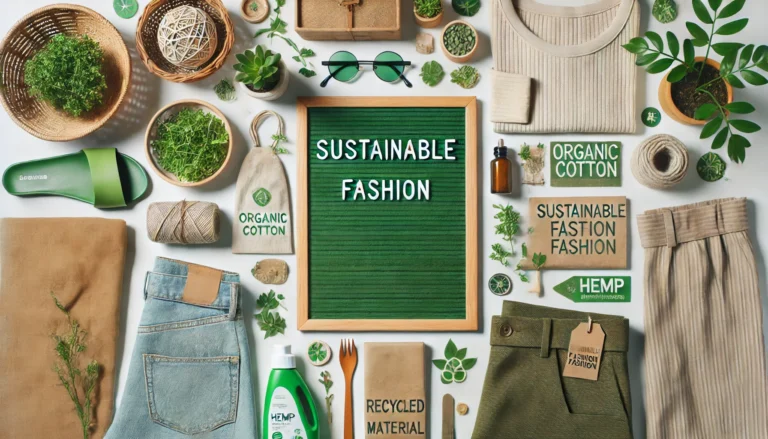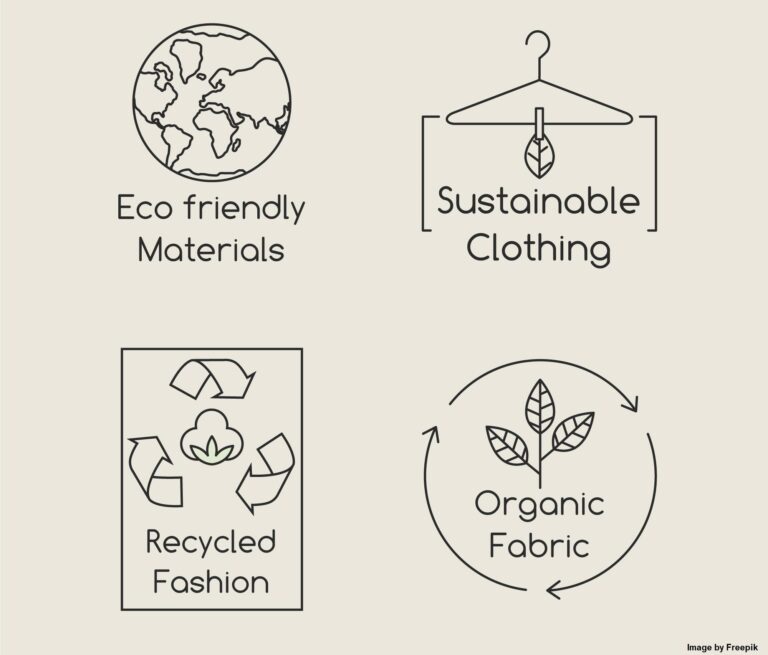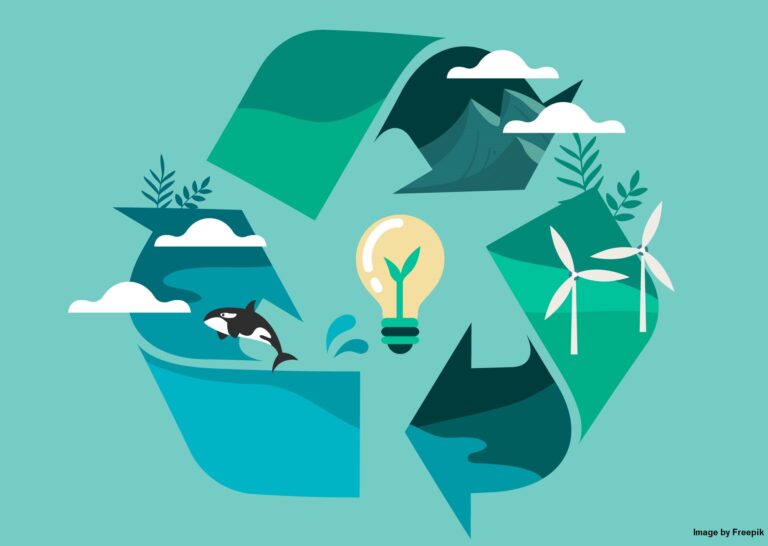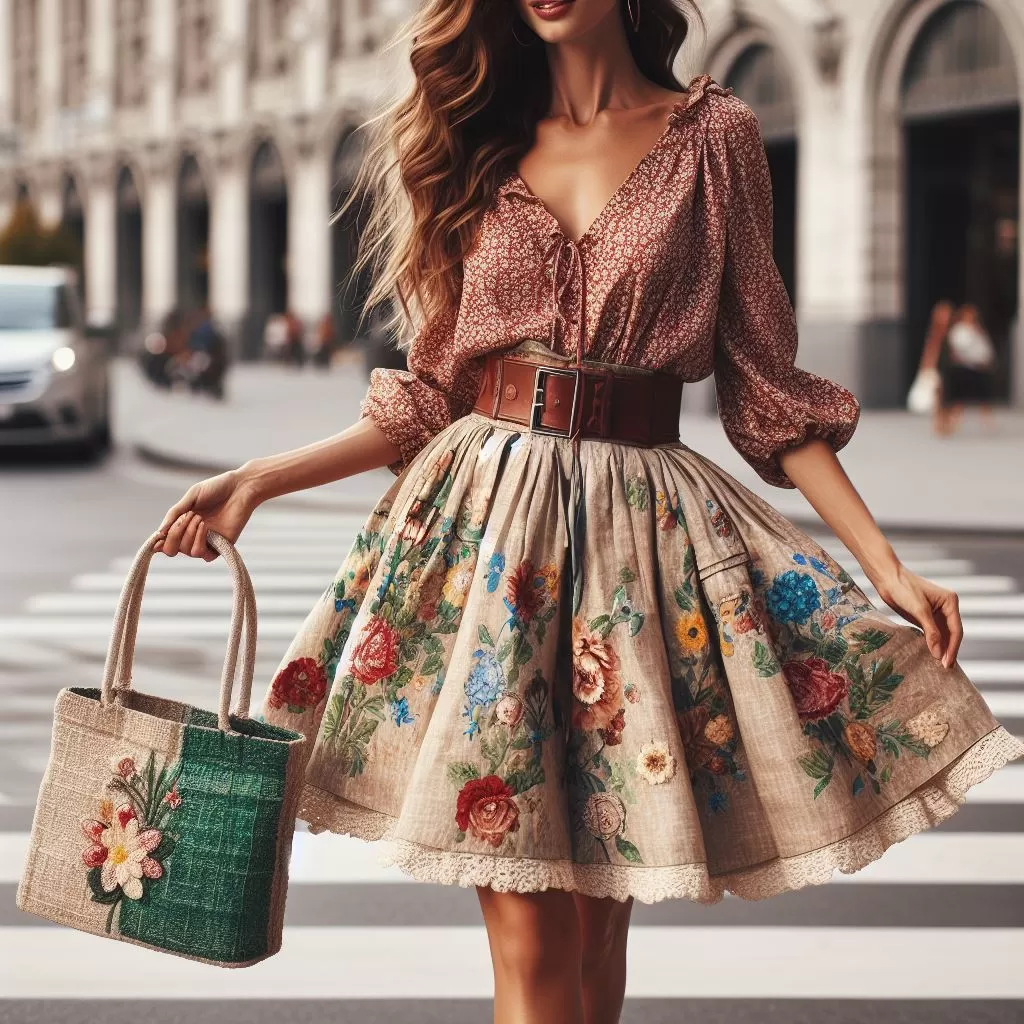It’s amazing how quickly fashion trends change, but there’s a movement that’s becoming really popular—sustainable fashion.
However, even with this rise, there are still some questions that remain: What exactly defines this movement, and why should we pay close attention to it?
Imagine, for a moment, clothing, not only fashionable, but becomes a symbol of ethical awareness, a way to make a positive impact on the environment and the people who inhabit it.
Curious? Well, join me as we explore the world of sustainable fashion. With its many layers, we’ll uncover its importance in an industry that is constantly evolving and pushing the boundaries of innovation.
Jump To:
Toggle
What is Sustainable Fashion?
Sustainable fashion is all about creating clothes in a way that’s kinder to the planet and the people who make them.
Essentially, it encompasses clothing, shoes, and accessories that are created, produced, distributed, and used in environmentally friendly ways that also promote social responsibility.
Most importantly, it’s a way of thinking that focuses on reducing harm to the environment and ensuring ethical practices are followed at every step of the supply chain.
It comprises a wide range of topics, such as: the use of sustainable materials, fair labor practices, waste reduction, and the promotion of long-lasting clothing design.
Unfortunately, the fashion industry has long been linked to major environmental and social consequences, such as pollution, waste, unethical labor practices, and the depletion of natural resources.
Based on a report by the Ellen MacArthur Foundation, the fashion industry produces a staggering 92 million tons of textile waste annually, contributing significantly to environmental degradation.
Nonetheless, the wind is shifting, as sustainable fashion is gaining momentum. In fact, the Global Fashion Agenda reveals that the number of fashion companies committed to sustainability increased by 40% from 2018 to 2019.

6 Key Principles of Sustainable Fashion
1. Ethical Labor Practices
This entails prioritizing fair wages, safe working conditions, and worker rights across the entire supply chain. By focusing on factories and farms where materials are sourced, we can ensure that everyone involved is treated with respect and dignity.
2.Environmental Responsibility
The above mentioned principle, is about reducing the environmental impact of clothing production by minimizing greenhouse gas emissions, water usage, and waste generation.
Furthermore, incorporating eco-friendly materials, adopting cleaner production methods, and implementing efficient recycling and waste management practices are crucial.
Cascale, formerly Sustainable Apparel Coalition, reports that sustainable materials can result in 24% lower climate impact compared to conventional ones.
3. Resource Efficiency
Ensuring the responsible and sustainable use of natural resources like water, energy, and land is vital. This can be achieved by selecting materials with a lower environmental impact, and streamlining production processes to minimize waste throughout the product’s lifecycle.
4. Circular Economy
This approach zero in on shifting towards more sustainable production and consumption patterns. Products should be thoughtfully designed for reuse, repair, remanufacturing, and recycling.
Key aspects include: designing long-lasting products, providing repair and recycling services, and establishing closed-loop supply chains.
5. Transparency and Accountability
To accomplish this, requires sharing valuable insights with consumers about the environmental and social impacts of products, from sourcing to production and disposal. As a result, consumers can now make well-informed decisions and demand transparency from brands.
According to the Fashion Revolution’s Fashion Transparency Index, which assesses brands based on transparency and sustainability, the industry’s overall score improved by 10.5% from 2019 to 2020.

6. Innovation and Collaboration
This principle centers on developing new materials, technologies, and business models to continuously improve sustainability in the fashion industry.
Through collaboration, brands, suppliers, NGOs, governments, and consumers can work together towards these common goals.
How is Sustainable Fashion Transforming the Industry?
The fashion industry is undergoing a positive shift, with a focus on greater sustainability. Here are some key ways this transformation is taking place:
- Shifting Materials: The fashion industry is noticeably using more eco-friendly materials like organic cotton, hemp, bamboo, and recycled fibers, all with a lower environmental footprint. This change is driven by consumer demand and the industry’s need to be more sustainable.
- Rise of Ethical Brands: Ethical clothing brands like Patagonia, Eileen Fisher, and Reformation are reshaping the landscape. They prioritize ethical labor practices, environmental responsibility, and using sustainable materials. Additionally, they ensure fair wages and safe working conditions while holding themselves accountable with transparency.
- Closing the Loop – The Circular Economy in Fashion: There’s growing interest in the circular economy, where brands design clothes for longevity and encourage repair, reuse, and recycling. Initiatives like Patagonia’s Worn Wear program and Eileen Fisher’s Renew program exemplify this shift towards sustainable practices.

Why is Sustainability Important in the Fashion Word?
Sustainability is incredibly important in the fashion world because our clothing choices significantly impact the environment. Think about it: from the water used to grow cotton to the chemicals in dyes and the waste produced by fast fashion, every step of the process leaves a footprint.
By choosing eco-friendly apparel, we’re not just making a statement but actively reducing pollution and conserving resources. Plus, sustainable fashion often means supporting fair labor practices, which is a win for everyone involved.
So, the next time you’re shopping, consider how your choices can contribute to a healthier planet and a more ethical industry.
How Can Fashion Be Sustainable?
- With eco-friendly materials like organic cotton, hemp, and bamboo, and innovative techniques like zero-waste pattern cutting and upcycling, eco-friendly apparel offers limitless possibilities.
- Adopting the concept of slow fashion. This focuses on quality rather than quantity, and choosing timeless pieces that last. By supporting brands that prioritize ethical and sustainable practices, we can come together to make a positive impact on the fashion industry.
- Sustainable fashion is all about finding the perfect harmony. That is, between personal style and the greater good of our planet and society. This shows a growing trend in fashion, pushing towards responsible practices, and a sustainable future.
Many fashion industry companies have made impressive progress in embracing sustainability. Check out these awesome examples:
Known for its outdoor clothing and gear, Patagonia has been a leader in sustainable fashion for decades. The company focuses on using recycled materials, reducing its carbon footprint, and promoting fair labor practices.
They also actively engage in environmental activism, and encourage customers to repair and recycle their products through initiatives like the Worn Wear program.
2. Eileen Fisher:
Is a women’s apparel company that emphasizes environmentally responsible procedures and designs in both its products and its business operations.
Utilizing eco-friendly materials such as organic cotton, Tencel, and recycled fibers, this brand, emphasizes timeless styles that promote longevity and versatility.
Eileen Fisher also takes back old garments through its Renew program to be repaired, resold, or recycled.
3. Veja:
Veja is a French footwear brand known for its stylish sneakers. These are made from sustainable materials like organic cotton, wild rubber from the Amazon forest, and vegetable-tanned leather. Veja also prioritizes fair trade and transparency throughout its supply chain.
4. Reformation:
Is all about women’s apparel and is dedication to integrate sustainable and ethical practices into their operation. Working with eco-friendly materials, such as Tencel, recycled polyester, and deadstock fabrics. Reformation, makes a point of selecting local production to minimize transportation emissions.
On top of this, detailed information about the environmental footprint of each product is on its website.
5. Allbirds:
Allbirds is a footwear company that specializes in comfortable, eco-friendly shoes made from renewable materials.
Their signature sneakers are crafted from merino wool, eucalyptus fibers, and sugarcane-based materials.
Not to mention, they also achieve carbon neutrality by offsetting its emissions through various environmental initiatives.
6. Pact:
A clothing brand that focuses on organic cotton basics for men, women, and kids. They prioritize ethical manufacturing practices, fair labor standards, and organic farming methods.
Pact also uses low-impact dyes and packaging materials made from recycled and biodegradable material.
These are just a few examples of companies that are making extraordinary progress in the area of sustainable fashion. Many other brands across the industry are also incorporating sustainability into their practices, driven by consumer demand for more responsible and ethical products.
Conclusion
To sum up, let’s first take a moment to imagine a world where fashion is not just about style, but also about protecting our planet’s health as well as our own.
Can we create a future where fashion becomes a force for good? By choosing sustainable clothing, we can showcase our dedication to a better future while looking amazing. Ready to join the movement for fashion revolution?
Let’s continue this conversation: What steps will you take to make your wardrobe more eco-friendly? Share your thoughts below!
Additional References
- Ellen MacArthur Foundation: A New Textiles Economy
- Fashion Transparency Index 2020
- The True Cost. (2015). [Documentary film].
- Fletcher, K., & Tham, M. (2019). Routledge Handbook of Sustainability and Fashion.



